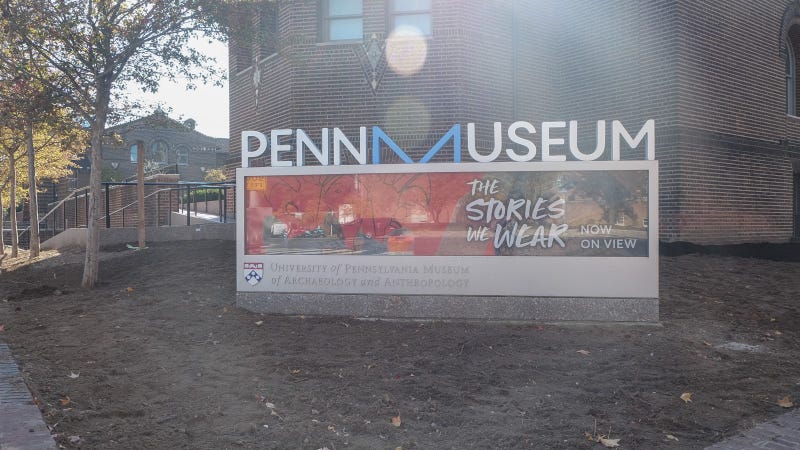
PHILADELPHIA (KYW Newsradio) — Plans are in place for a proper burial of 13 stolen skulls of Black Philadelphians that were on display in a University of Pennsylvania classroom. However, a Philadelphia activist is asking for the community, and not the university, to decide on how to move forward.
The skulls arrived at the University of Pennsylvania in the 1960s and were on display in glass cabinets in a classroom at the university from 2014 to 2020. They are now housed at the Penn Museum and are not on display.
The skulls are part of the Morton Cranial Collection, assembled in the 1830s by physician and anatomy lecturer Samuel G. Morton. The collection consists of about 1,300 crania gathered from all over the world, from Egyptian times to the early part of the 19th century.
Morton collected these to advance white supremacist views. He wanted to show what he considered to be the superiority of Europeans and the inferiority of Blacks and other races by looking at the skull size.
The work has long since been disputed, and the university feels it’s time to right the wrongs of the past.
After the murder of George Floyd in 2020, the university decided to do something about the 13 Black Philadelphians whose remains were part of the collection. Museum Director Christopher Woods said a petition was filed with the Philadelphia Orphans’ Court.
“We hope that they will allow us to follow through with our plans to bury and commemorate these individuals at Eden Cemetery,” Woods said, mentioning a historically Black cemetery located right outside of Philadelphia in Collingdale.
“Our plans are for an interfaith ceremony at Eden Cemetery that will be public. We’re planning on a grave marker, of course, and we’re going to commemorate these individuals on campus as well.” Woods added.
A community advisory board was assembled to help with this decision, but board member Abdul-Aliy Muhammad, a community activist and freelance writer, said the decision was already made before their first meeting.
“The museum had already made a decision about where to bury the crania, had made a decision about the timeline, and had offered it up as a kind of a framework for us to consent to, but not be deliberative about,” said Muhammad, who would like to see Penn hand over the financial resources to the community to make the final plans.
“This has been a fight to get them to confront their racist history and now they’re trying to position themselves to seem like the good guys, like ‘We decided to bury these remains.’ No! Organizing work went into this,” Muhammad said.
“The institution that has caused harm, and has benefited from the harm, shouldn’t be controlling what healing looks like. The descendant community should be doing that.”
Muhammad also has several questions surrounding the remains in the graves from where the skulls were taken, and whether the university has a full inventory of Morton’s collection. Just one of the 13 skulls was able to be identified. His name was John Voorhees, and Woods claims a lineage could not be found.
Muhammad filed an objection to Penn’s petition and an informal conference with a judge is now scheduled for Sept. 1. Woods, meanwhile, feels it’s the moral and ethical responsibility of the university to see this through.
“Morton did not work for the museum. This collection came here in the 60s. The university now is a very different place in 2022 than it was in 1840. It’s our responsibility to solve this problem,” Woods said.


